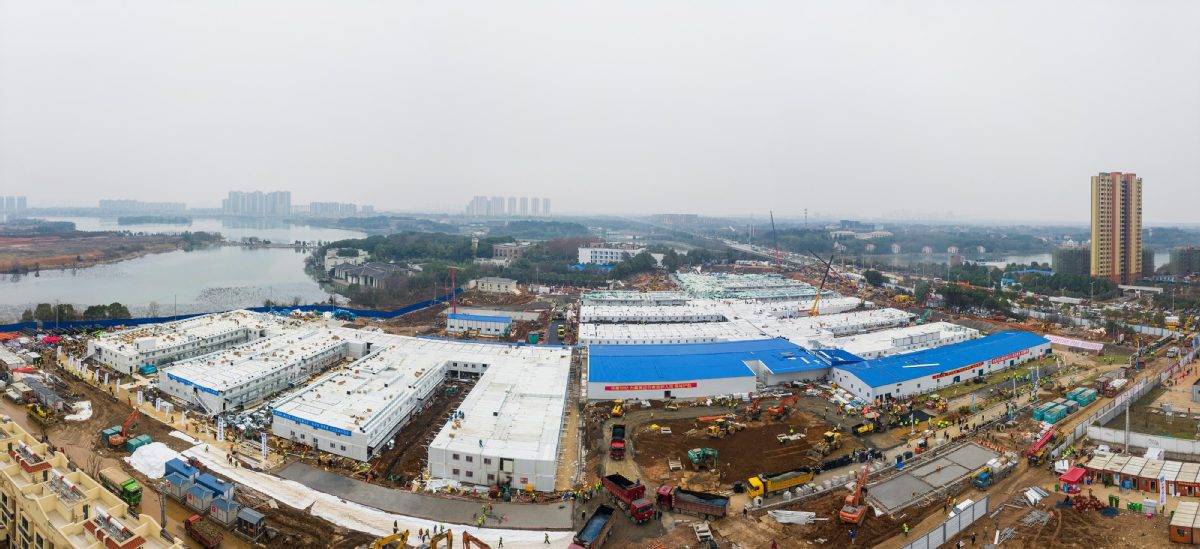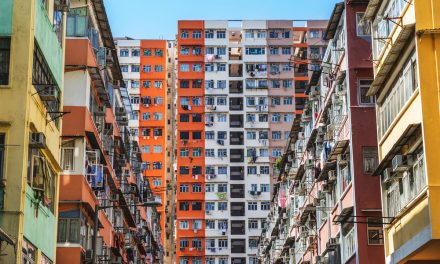China builds new hospital in 10 days to combat coronavirus
China has built a makeshift hospital in 10 days to battle against the novel strain of coronavirus in Wuhan, the epicentre of the virus outbreak in central China’s Hubei Province. Huoshenshan (Fire God Mountain) Hospital was delivered Sunday (Feb 2) in Wuhan. It is dedicated to treating patients infected with the virus. A total of 1,400 medical staff from the armed forces are tasked with treating patients in Huoshenshan Hospital starting from Monday. Replicating Beijing’s SARS treatment model in 2003, Wuhan started building two makeshift hospitals: Leishenshan (Thunder God Mountain) and Huoshenshan. On Jan 23, workers broke ground on Huoshenshan Hospital, with a capacity of 1,000 beds. Located in a sanatorium near Zhiyin Lake in southwestern Wuhan, the hospital is far away from downtown areas where people converge. The area has sufficient transportation and pipeline systems, and existing dining halls and dormitories are ready to provide services. China’s state broadcaster has been live-streaming the around-the-clock construction progress, which instantly went viral online. (The Star Online)
Penang’s Gurney Wharf expected to be completed by August 2021
The Penang government expects the Gurney Wharf project to be completed by August 2021. Chief Minister Chow Kon Yeow said the state government would sign the agreement to appoint the consultant for the Gurney Wharf project at some point in February. “After that, there will be a contract, a tender to be called to appoint a contractor to start planting trees and planning the landscape as well as ensuring that the waterfront project would be completed in the next 18 months,” Chow said. “This is in line with the state government’s vision of becoming a green and smart state that can inspire the nation,” he added. Gurney Wharf, a new seafront public park, is a state government initiative, with its conceptual master plan by Grant Associates, an internationally-renowned consultant architect firm. (Malay Mail)

Half of Malaysia’s banking assets to be Islamic in next decade
Malaysia can expect half of its banking assets to be Islamic by 2030 as the industry’s growth outpaces conventional banking, according to a lenders’ association. Loans that comply with the religion’s ban on interest is set to increase by 10% to 15% annually over the next five years, outpacing the 5% to 7% growth seen for non-Islamic loans, said Adissadikin Ali, president of the Association of Islamic Banking and Financial Institutions Malaysia (Aibim). Consumers are becoming more familiar with Shariah-compliant products, he added. Malaysia, which pioneered Islamic finance in the 1980s, set a target for Islamic banking assets to reach 40% of the total industry by 2020. That proportion has only reached 31% as of 2018, equivalent to RM916.7 billion, according to BNM. (Yahoo News)
Reapfield to become tech-enabled agency with help of Keller Williams
Reapfield Properties Sdn Bhd is in the midst of reinventing itself into the first tech-enabled agency in Malaysia through its relationship with US-based Keller Williams Realty (KW), the world’s largest real estate technology firm by agent count. On Sept 1 last year, Reapfield entered into a 20-year agreement with KW to license the latter’s trademarks, technology, systems, models and training programmes. Reapfield group COO Jonathan Lee said Reapfield will be required to have large market centres where all its agents will be based. “It (KW) practises what we call an interdependent, agent-centric business model,” explains Lee. This model combines all layers of relationship in an organisation, from real estate agents to market centre leadership and regional leadership. Agents can use the cloud, data and system to run their business and generate marketing plans for listings. (The Edge)
Unaffordable rental housing may be ‘new normal’ in the US
A growing number of Americans cannot afford to pay their rent as rental property prices hit a record high, researchers said on Friday, amid an outcry over rising evictions and homelessness. The number of U.S. households living in rentals also surged to 43.7 million in 2018 – up 21% from 2004 – a study by Harvard University found, as a growing share of older, larger families can no longer afford to buy their own homes. Some 21 million U.S. renters are cost-burdened, according to the report – accounting for almost half of all renters – in both urban and rural areas across the country, with minorities disproportionately affected. The problem of unaffordable rental housing is a global one, according to World Bank, which found that the only affordable rentals in most fast-growing developing countries were insecure, in the informal sector and with poor living conditions. Millions of poor people who are eligible for housing subsidies have not received help as federal rental assistance programmes have grown by only about 1.5% annually in recent years, the Harvard report said. (The Sun Daily)





